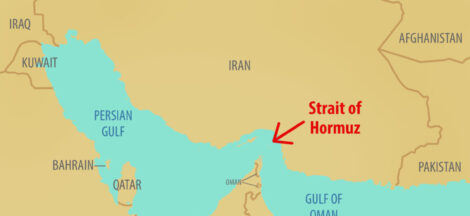By Dr. Gyan Pathak
India may be only three to six weeks away from the predicted third wave of COVID-19 that may actually hit the country. Union Ministry of Health sounded alarm yesterday, though not for the third wave, but for slowing down in drop of new cases as “cause of concern”, and also for other co-infections that might be problematic during the monsoon. Within 24 hours of expressing such an alarm, India reported 43,654 new cases as against 29,689 cases a day earlier.
The cause of worry was also obvious due to several other reasons apart from this high level of fluctuation in new cases both at all India level as well as regional and state levels, while our Central and state governments are not fully prepare to handle the third wave if it struck as has been predicted in several assessments in the later half of August which may reach at its peak next month in September 2021.
The other causes of concern are opening up of the economy with relaxation being given in containment measures in all parts of the country with an attitude of complacency in governance, the low level of vaccination coverage, and laxity on the part of general public who are throbbing the public places in large numbers and often without even minimum level of protection, such as masks.
The sounding of alarm must be seen in this general background even though we have achieved the recovery rate of 97.39 per cent. It should not make us complacent because we still have 2.61 per cent potential patients who may be facing a threat to life if infected by present variants of the virus. Since we already know some of the variants, such as the delta variant, which may bypass the immunity of many people created due to earlier infection or inoculation, the level of threat could significantly increase. The other cause of concern is the nature of the virus to mutate. If new more infectious and fatal variant emerge, the country would be in greater trouble than it is predicted.
One of the assessments about the predicted third wave is that the daily cars of infection may rise to around one lakh. Since experts are telling this, we cannot contradict them even though as of today we have over 46000 new infections, but we have every reason to doubt that there assessment might be conservative. If third wave strike, the daily infection may be much higher than their assessment. It is chiefly because India has still more than 40 crore vulnerable people. We have landed to this figure after deducting the figure given by the sero-survey conducted in the country that found presence of anti-bodies in their blood indicating their immunity from COVID-19. They are former corona patients. Additionally, we have 44.61 crore people who have administered at least one dose of vaccines. Though it is a matter of some relief, the persisting high level of vulnerability is a serious cause of concern.
The number of recovery is still less than number of daily infection with high fatality rate. During the last 24 hours 41,678 patients but 43,654 new cases were reported. It means India’s Active caseload may increase and handling them effectively with our limited medical facilities and professionals could remain problematic. In such a case preventing overwhelming of medical facilities will again be a tough task as we have experienced during the fist and the second wave. Currently our caseload is 3,99,436 patients and active cases constitute 1.27 per cent of total cases. Weekly Positivity Rate remains below 5 per cent, currently at 2.36 per cent; Daily positivity rate at 2.51 per cent, remains below 5 per cent; Testing capacity substantially ramped up to and we have tested 46.09 crore people as of now. However, we should never forget that we are about 140 crore.
We have increasing trend of infection in 22 district of the country while 54 have reported more than 10 per cent positivity rate for the week ending July 26. Moreover, the behaviour of the virus cannot be taken for granted.
Though the Union Ministry of Health has appealed people not to show laxity towards following Covid-appropriate behaviour as co-infection along with coronavirus could be “problematic” for them in monsoon season, it also needs to do many things ranging from removing complacency of the officials and to be ready in their preparedness to face the third wave if we fail in preventing it. Containment measures need more carefully handling especially in the regions witnessing either high level of infections or is rising. Medical preparedness is more important as also the economic support to the vulnerable.
Union Ministry of Health has already been talking to the states about all the areas of concerns, but it must be followed with concrete action in terms of helping them with resources for putting medical facilities in place and speeding up vaccination by making vaccines available at inoculation centre. People also must follow all the preventive measures as per COVID-19 guidelines recommended by experts. Any laxity at this stage would be too costly to bear because the first and second wave have left us with little resources and exhausting corona warriors. (IPA Service)



 The Assam-Mizoram Border Clash Has A Long History Of Conflict
The Assam-Mizoram Border Clash Has A Long History Of Conflict 